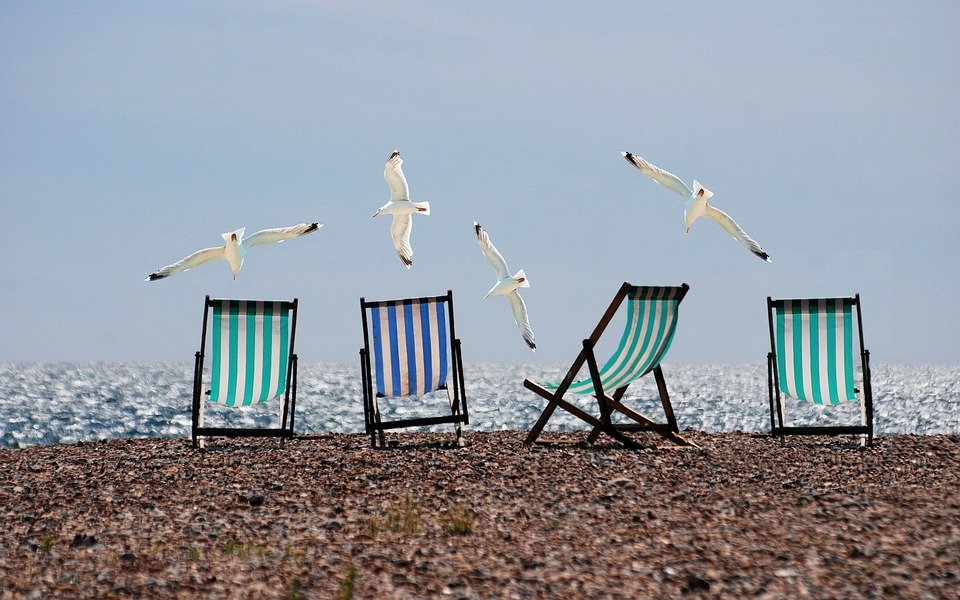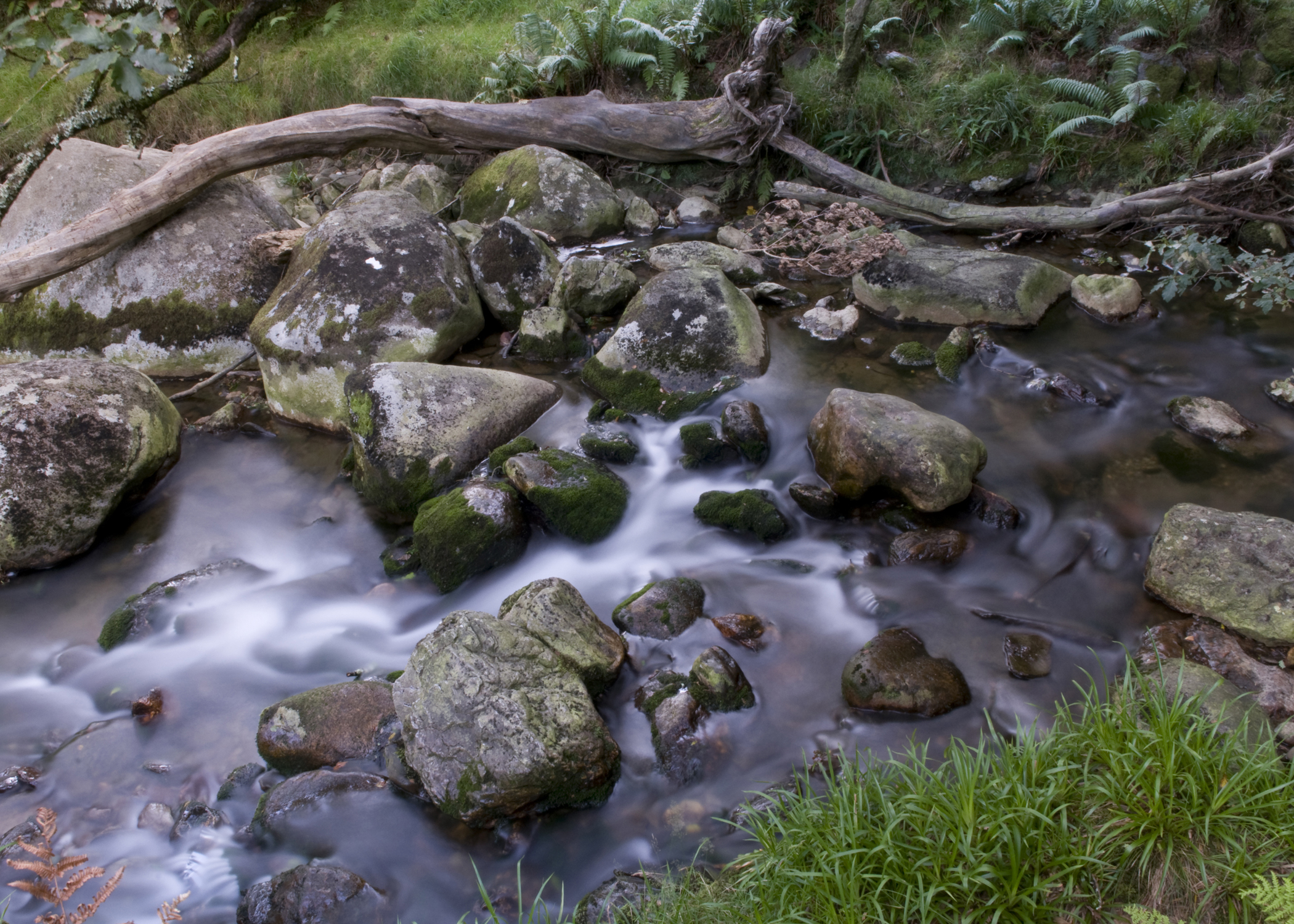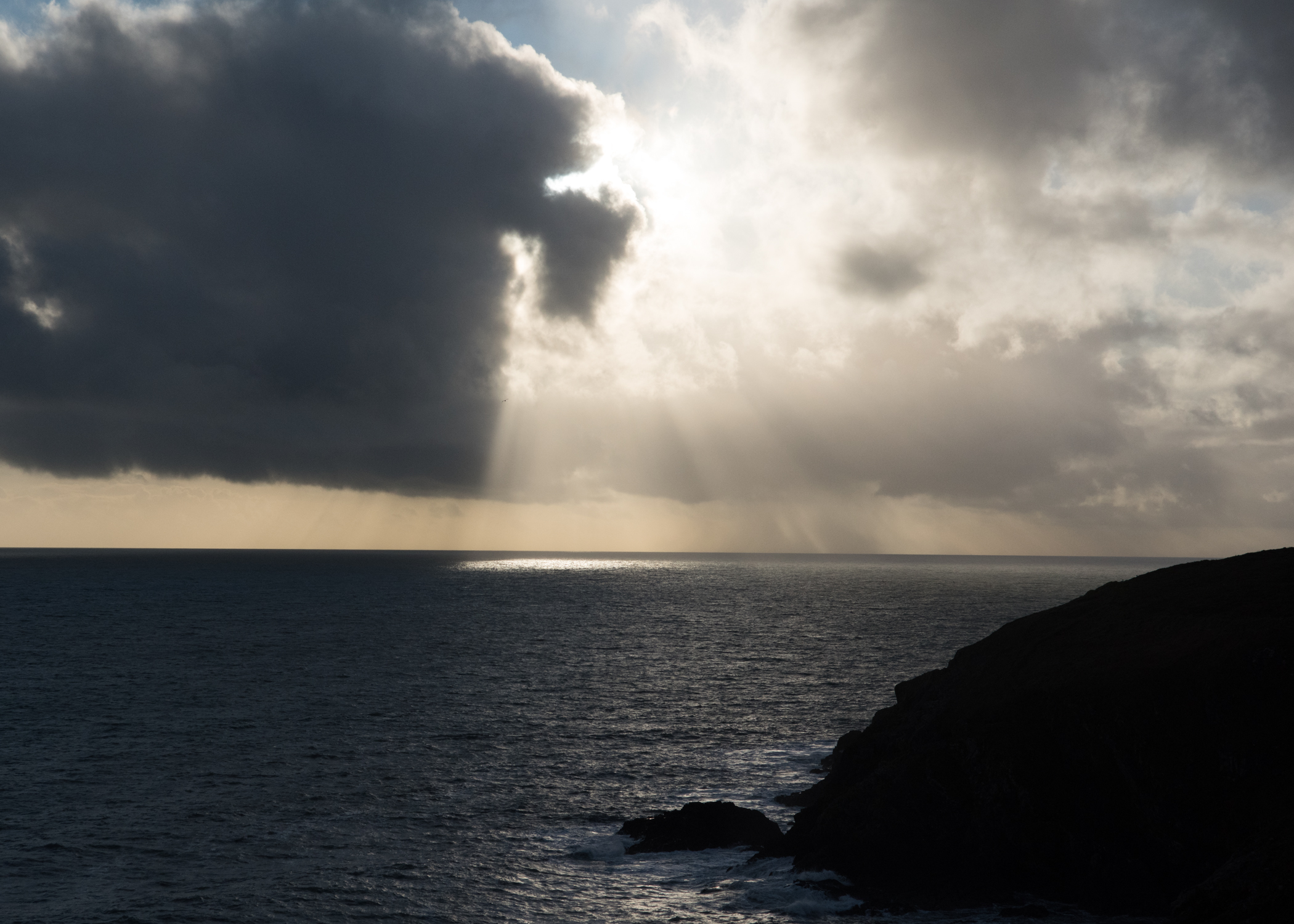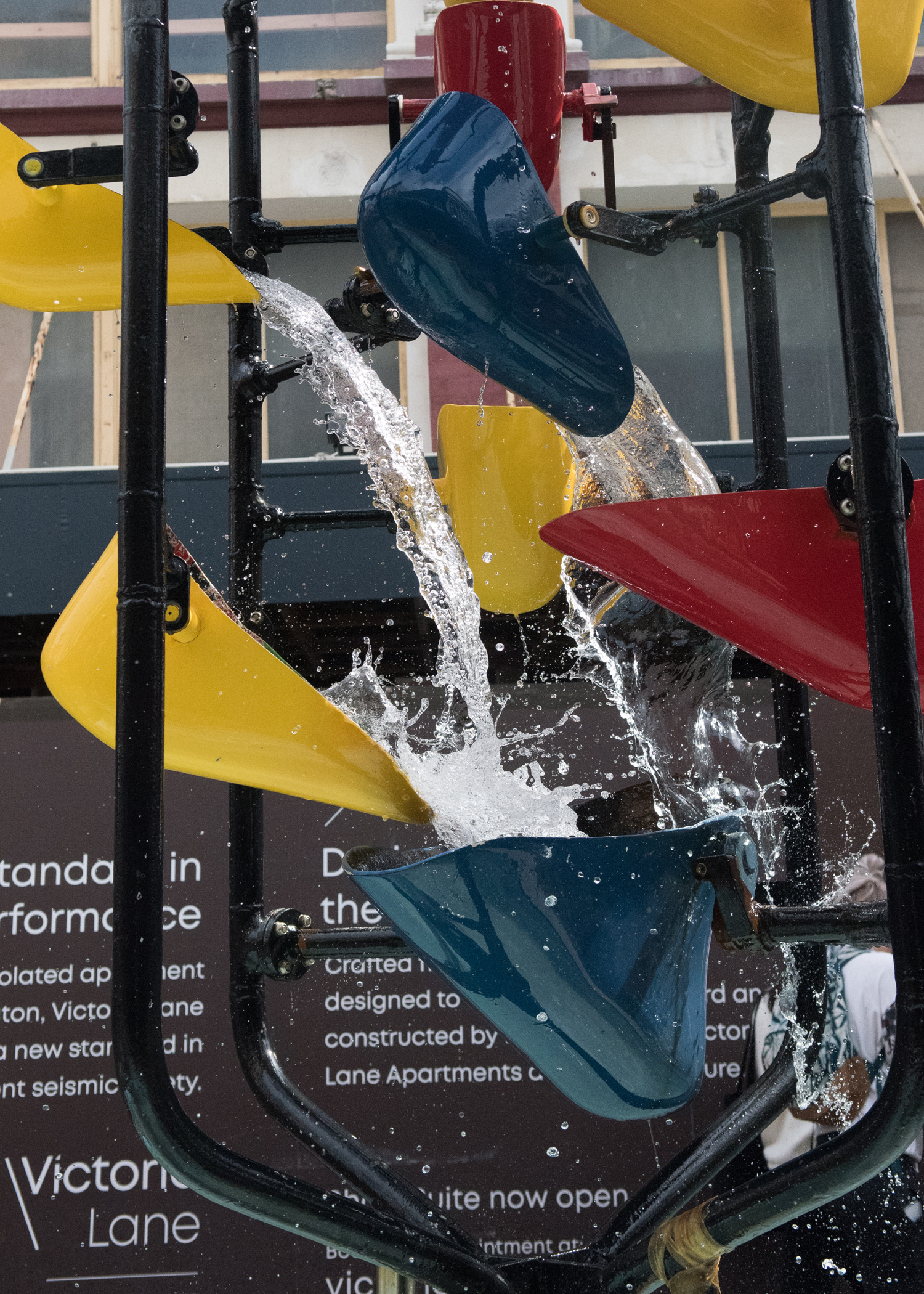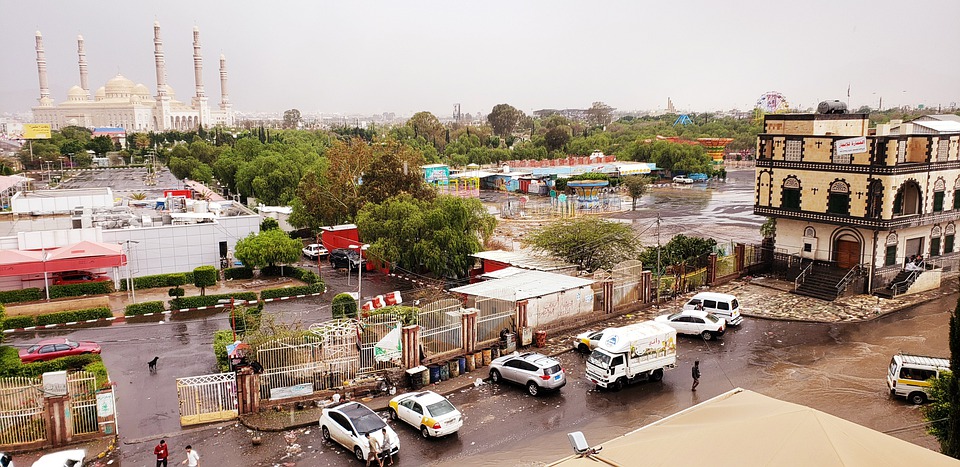Autumn tells me that this picture has no name, but in my mind I am calling it “The Moon in her Hands.”
Neverland, by Laney Rie
Laney Rie is a singer songwriter from Colorado. She has been writing songs since she was 12. Her inspiration comes from her life experiences and the people she has come in contact with. Her musical style is indie pop, with mellow piano and poetic song lyrics. Laney has a soulful sound, especially for her youthful age. She wants her music to impact people in such a way that they don’t feel alone in this world.
This is our second song from Laney this launch weekend. Her EP, Childish Dreams, can be purchased from Apple Music.
Number Withheld
Yesterday I received four calls from a blocked number. This has been going on for weeks now.
I received them, but I didn’t accept them. Nor will I, no matter how often the dastards call. Like many others, I won’t answer blocked numbers. The era of friendly, unsuspicious telephone-obedience is over, and good riddance to it. Telemarketers, stalkers, creditors and odious prank-calling radio DJs have brought the age of telecommunications innocence to a shameful, paranoid end, like a bankrupt businessman’s relationship with first-class airport lounges.
These days, making a call with your number blocked is like wearing a balaclava to a speed dating event. It’s like covering someone’s eyes from behind, yelling “Guess who?” but refusing to take your hands off. It’s like going to a job interview with one of those black rectangles from old-style “identities concealed” news reports pasted over your upper face (which would actually be totally cool, now that I think of it).
You may well be experiencing similar harassment yourself; I know of two other confirmed cases (and we’re all on the same network, for whatever that’s worth). One guy, Dave, actually answered recently, and got thirty seconds of silence before he hung up. But still that infuriating impersonal buzz keeps coming.
It’s gotta be a call centre. If a reasoning human being was behind this, and they really wanted to get through, surely they’d have the cop-on to change the “send number” setting on their mobile, or fire off a text message. If they’re using an unlisted landline, they should know that entering 142 before dialling makes your number visible just for that call.
Call centres, on the other hand, navigate by the pure hard stars of bits and bytes. Once your number’s on their list, once you’re scheduled, then no force on earth can prevent that hateful ring-ring from finding you. Their evil computer brains advance-call the next number even if no-one’s yet ready to talk to you. Not a microsecond of company time is wasted; immediately poor Jimmy Q Agent on node 212 finishes one call, he’s connected directly to you or me, wondering who the hell this is while he fumbles the intro of his why-you-need-underpants-insurance spiel.
Except he won’t be connected to me. I don’t care how often he calls, who he is, or what he wants. I’m not taking his call. Show your number, you dirty feckers, and maybe we can talk.
George Wells
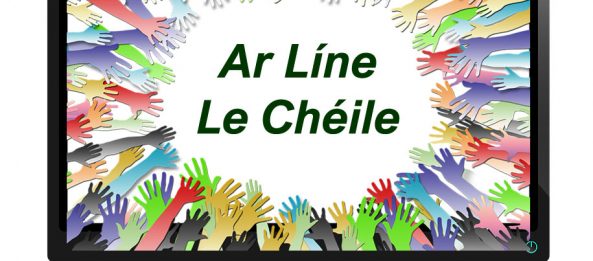
Ar Líne Le Chéile – Online Together
Before I was involved in an online arts centre, I was involved in an online school.
The Covid-19 has involved a lot of “online firsts” for me, many of which involves using new software for face-to-face online conversation. Ar Líne Le Chéile was the first of the firsts.
As soon as the schools in Ireland were shut, on Thursday 12 March, three friends (Notes from Xanadu contributors Philipa Farley and Simon Woodworth, and electronic engineer Gerard Heaney) and I decided to set up an online school. We wanted to be able to help children of friends and family with any isolation and loneliness that they might be feeling as a result of the crisis, and to give them the opportunity to explore new ideas with each other. The next day, Philipa gave Gerard and me an introduction to Microsoft Teams, and two days later I ran a trial lesson with my niece and nephew, to make sure I knew what I was doing, software-wise (with more than a decade’s experience I was fairly confident on the teaching front).
As it soon became clear that the regular schools would be sending work home for the children, I decided to have a different focus – theme-based, multi-disciplinary lessons designed to whet the student’s appetite for further exploration or activity, in whichever direction might take their interest. The first of these was a virtual visit to the British Museum to visit the Rosetta Stone. We also used a hieroglyphic typewriter, and made posters. After a meeting with parents on the Monday night, the school opened with this lesson on Wednesday, 18 March, with 11 pupils.
We settled into a regular routine after that with the themed lesson on Mondays and an associated feedback class on Fridays. On Wednesdays, I led a half-hour conversational Irish class, whilst Philipa taught Scratch programming on Thursday. Gerard gave us an evening Introduction to Electronics on the second week. During what would have been the school holidays, I led a weekly “keeping in touch” session on the two Thursdays.
Ar Líne Le Chéile has pupils from Sligo, Roscommon, Dublin, Cork and Galway. The school is free, and the teachers are giving their time as volunteers. I asked some of the children and parents for their thoughts for an earlier press release.
“It’s a great way to learn – you feel connected with other learners” said Jack Keaney, a 12-year-old student.
Charlotte Gask, mum of three of the students, had this to say:
“For me, I think the subjects are great. It lovely that it includes lots of ages and abilities, but mostly I love that it is scheduled. It gives us an anchor for our ‘school’ day.”
Her daughter, Georgie Longstaff, added:
“I like it, it’s more fun than school.”
Philipa’s two daughters, Ruth and Zoë, love that they can help demonstrate and make a game (while learning). They also like helping their mother to teach.
We are currently on a two-week break, and there was some thought that maybe the normal schools might be resuming before the end of that, but An Taoiseach Leo Varadkar’s announcement yesterday has made it clear that primary and secondary schools will not be reopening until September. Ar Líne Le Chéile, on the other hand, will be resuming on 11 May. Our students are the nicest bunch of children you could possibly hope to meet, and I am looking forward to seeing them all again on Monday week – nuair a bheidh muid ar líne le chéile arís (when we will be online together again).
Mary Tynan
More information about our school can be found at www.arlinelecheile.school.
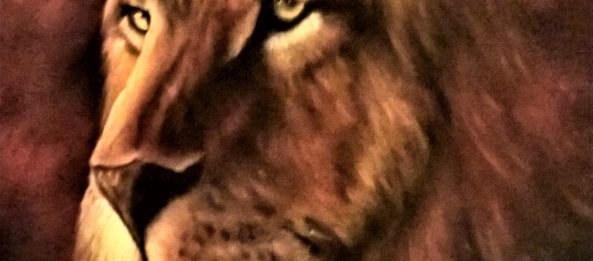 Image
Image
Art by Joy-Elizabeth Mitchell
Artist Joy-Elizabeth Mitchell is based in West Cork. Her specialities are Animals and Birds, statements of injustice, and landscapes. She also take commissions. The three paintings below are for sale. For details of these, or to discuss a commission, you can email her on joyelizabethmitchell09@gmail.com.

Wish You Were Here
Today we are lolling on bright red towels at Inchydoney beach. The tide creeps out, and a black and white sheep dog and a toddler wearing swimming trunks race each other along the water’s edge. It’s good to breathe in the tangy air. Fachtna has been reading a thriller, turning the pages at a rapid speed, but he soon tires of it all, and joins me in my favourite pursuit – people watching.
A young woman ambles by, her feet sinking into the soft sand, her body swaying with the weight of her bump. She wears a yellow sundress, and moves regally, despite her awkwardness. Fachtna picks up his book, shields his face. I lie back and shut my eyes. We came here to get away from it all.
Two weeks ago we finished the last round. The hope-despair cycle. I suggested adoption last night, but was met with stony silence. Maybe he will warm to the idea.
And in the meantime there is this: a July afternoon, the sand scorching my heels, a barking dog, a giggling toddler. One empty bank account, two worn-out people, three days of marriage-mending.
The sun glistens silver on the tops of the waves. The beauty of it hurts my eyes. Must post a picture to Facebook. Our friends will be envious of our long weekend away.
Geraldine McCarthy
Geraldine McCarthy lives in West Cork. She writes short stories, flash fiction and poetry, in both English and Irish. Her work has been published in various journals, both on-line and in print.
Gloves Off, by Aurora Adams
Aurora is a highly talented London-based puppeteer and actor.

Bringing it All Back Home – Online
Welcome to the relaunch of Notes from Xanadu. The next four days will witness the transformation of the site from online magazine to online arts centre.
Our homepage has always said Welcome Home. It’s been a place to come in, take your shoes off and relax with something to read, whether that be fiction, poetry, articles or reviews. We’ve never published a bad review – if we couldn’t find something good to say, then we wouldn’t say anything at all (but that never happened). We reviewed theatre, art, books, opera, film, eateries, and even, on one occassion, a karaoke booth. It was a home from home that gave you ideas about what to do outside the home.
And now many of us are confined to the home. On deciding to relaunch Notes From Xanadu at this point, it was decided to make it into much more than an internet magazine. I personally had a list of ideas for an arts centre, and decided to see how much of it could be implemented online – quite a lot, as it turns out. We have art, music, puppetry and of course writing, much of which explores the theme of staying at home or living online, as well as how the “new normal” is for the people who do go out to work.
For many people, the online way of life has been a reality long before Covid 19. I am thinking in particular of the chronic illness community, of which I am a member. Most of us are severely limited in how much time we can spend out and about; some are completely housebound; some are bedbound. The internet is a place for people to connect, share thoughts and ideas, and even study – for those who are well enough. This is particularly true for people who live alone. Other people may find themselves in the same boat by virtue of living in a remote location. We have always known how to do as much as possible online. The coronavirus has taught others the same skills. There is a lot of talk about the downside of the internet – people being addicted to their phones, not having real-life conversations, preferring the virtual world to the real world. But in reality the lines between the two are blurred.
And so here we are, bringing it all back home – online. Welcome to my world. Welcome to our world. Welcome to Xanadu.
Mary Tynan
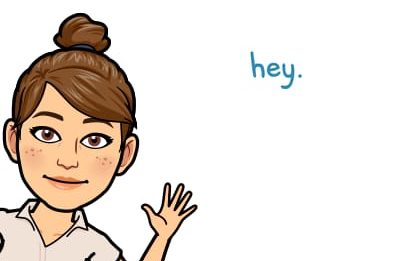
Summer Plans
Transplanted. Geeking out about most things AI, law and quantum, offline and online, when not spending time with the family, pets, and friends. Expect commentary on food and wine from time to time.
What are your summer plans? I can tell you that we were planning on a trip to the seaside, possibly to a hotel. This was besides quite a long list of day trips out to touristy joints such as the Cliffs of Moher. We were perhaps partly planning at some point to go to Disneyland Paris*. These things obviously depended on work going well. You know, because I’m ‘self-employed’** and these things are generally achievable and within our control.
Well, Mother Nature, God, the Universe and everything else has handed us 2020 on a plate with a side serving of ‘screw your plans, human’! I suppose at this point on day whatever of whatever we call this situation – lockdown? quarantine? self-imposed semi-solitude while we count our loo rolls? – it is as good a time as any to practice gratitude, mindfulness and everything else akin to such.
I’ll start with gratitude for the fact that we likely won’t be subjected to masses of humanity in small enclosed spaces over the summer. Most likely you, dear Reader, will have experienced the deep joy of overwhelm and meltdown, as we have on several occasions, in the midst of activities that had previously been begged for with much persuasion. So, I am thankful that I can just cite COVID-19 LOCKDOWN 2020 in response to any such Disneyland related requests, parks and cruises included. My screw you to TV advertising during prime time! We’ll save a few ‘youro’ in the meantime too. Happy days.
Let us move on to mindfulness and living in the present moment, because, let’s be honest, there doesn’t seem to be a single human on this earth that can tell us what tomorrow will bring. Our default is the present moment. And it’s pretty damn uncomfortable! I’m on the verge of doing the |||| / on the wall above my desk. I keep having to ask what actual day it is. Now, more than ever before, we realise what a man-made construct time in fact is.
Everything else akin? Well, I for one am at the stage of hands in the air and do what you want***. Really, I am. I am a compulsive goal setter, planner and organiser. These are great skills in the context of a regular and functioning system. Right now, not so much. They are anxiety causing beasts.
Which brings me to the last point of this likely last column because like our previous reality, all changes at some point****. Was ‘before’ regular and normal? Is the universe resetting? Should we have taken the other colour pill? Forgive me, I seem to have woken up in the midst of the type of ridiculous movie that I usually don’t go and watch because when will that ish ever happen to us? Daily life feels like driving in the mist. It just swirls without context or horizon.
So, with time passing as it inevitably does, this summer, you might find me and us here at home, braai’ing*****, fixing up the garden and generally enjoying each other’s company. Outsiders of the household might be welcome but keep your two-metre distance. Happy days!
*The smallies were negotiating a cruise. Not going to happen ever because I have the words DIAMOND PRINCESS forever burned into my prefrontal cortex. Everything from hereon in will be put through the COVID-19 LOCKDOWN 2020 filter.
**On my LinkedIn though, I’m a director, lead auditor and consultant. Sounds so much better, no?
***But only after the daily schedule has been strictly adhered to – school work, cleaning, meals by the clock.
****Someone else can have a turn now!
*****Because barbecuing apparently holds a whole cultural context that we have yet to wrap our heads around.
Philipa Farley
All of Me, performed by Autumn Black
“Hi my name is Autumn Black. I enjoy writing original songs and covering others on guitar. I love playing guitar because it’s a way I can express myself and it helps me smile when I’m down.”
Bravery’s Lullaby, by Laney Rie
Laney Rie is a singer songwriter from Colorado. She has been writing songs since she was 12. Her inspiration comes from her life experiences and the people she has come in contact with. Her musical style is indie pop, with mellow piano and poetic song lyrics. Laney has a soulful sound, especially for her youthful age. She wants her music to impact people in such a way that they don’t feel alone in this world.
We will be featuring more songs by Laney over the launch weekend. Her EP, Childish Dreams, can be purchased from Apple Music.

Water, by Colin Byford
This is the first of two exhibitions in our gallery by Colin this weekend. The second, entitled “Bugs” will debut on Monday, 4 May.
“I have had a 4 plus decade relationship with photography mostly as a high level amateur and a couple of years fully professional both in Ireland and back home in New Zealand. My main commercial work to date has been in family and event photography.
I am fascinated by the technical aspects of photography. I learn the capabilities of the equipment and then push them. When combined with my computing background I can get some pleasing results. Sadly the artistic side is hard to teach but I am told I have a good eye.
I hope you enjoy my images. Prints of all these images are available to buy up to A3 size. My website is www.byfocal.ie and I am on fotocommunity.com as Colin S Byford.”

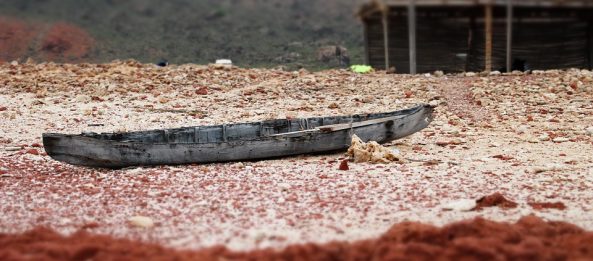
Yemeni Exchange
As the elderly Boeing 727 took off from Abu Dhabi and banked around a huge thunderstorm, I realised I was heading somewhere different. In 1998, I was on my way to the port of Aden in Yemen. As the plane approached the airport there, the burned-out hulks of aircraft littered the airfield around the runway. The terminal building itself was gouged out with a huge bomb crater, the scars of a civil war that had ended 4 years previously. We had to enter the arrivals area via the men’s toilets. I was held up by customs who insisted on writing a lengthy note in my passport because I was carrying a (then relatively rare) Toshiba laptop.
I had been sent there by my employers to help commission a telephone exchange. Aden was blisteringly hot as well as being a bustling madhouse, with a good chunk of the city inside a volcanic crater. The base station for our new mobile system sat on top of a ridge at the edge of that crater, over razor sharp lava fields. It was so hot that the 4×4 we used to get there had two air conditioning units. The icy chill of the 4×4’s interior was a huge contrast to the waves of heat radiating from the lava field on which the base station was built.
The telephone exchange was in cooler surroundings, but still extremely hot. A trip to the bathroom involved shooing the rats out from under the toilet! Outside the bathroom was a tented area, at which the faithful prayed several times daily. The calls to prayer from the muezzins were piped over loudspeakers all over the city. It is a sound I will never forget.
The sea was as warm as bathwater to swim in, and we went for a dip one evening, right next to the huge desalination plants which supplied freshwater to the city. Swimming was very pleasant, but not effective for cooling down! The food at the hotel we stayed in was excellent, but I made the mistake of sampling a local drug called Qat. Qat is a leaf which, when chewed, is pleasantly sweet and gives a very mild narcotic buzz. A British colleague described it as “chewing a Privet bush.” It was certainly not unpleasant and it was not unusual to see Yemeni men with a wad of Qat shoved in a cheek for chewing.
Unfortunately, in my eagerness to sample local customs, I had forgotten basic food hygiene and cleanliness. As a result of my Qat–chewing, the subsequent stomach upset caused me to rapidly lose 5 kilos over the following week. The rat–infested toilet was a frequent visiting place. It took 15 hour’s unbroken sleep to finally clear the bug and recover some sense of normality.
Yemeni men used to walk around hand-in-hand and Yemeni women invariably wore black abayas with a slit opening for eyes. Underneath their severe outer clothing, however, you could frequently see a colourful and fashionable shoe peeping out. I was lucky to experience how friendly and helpful Yemenis were: I never felt threatened or unsafe there. Whilst, at the time, there was a habit of kidnapping foreigners, they were always well treated. So much so, that a French kidnap victim was presented with an AK47 on his release and wrote a letter of release to his captors. Unfortunately, this friendly practice ended when the government started to shoot kidnappers, a counterproductive practice that resulted in the deaths of several victims. It was surely a sign of future trouble in the country.
After two weeks, the telephone exchange installation was successfully completed. I was able to make mobile telephone calls on the system, always a gratifying experience. Unfortunately, I had less than 12 hours to enjoy the fruits of my labour. At short notice, I was asked to travel to Egypt to talk to customers in Cairo. I had to travel to Sana’a to catch the flight because of an airline strike in Aden. This involved a 400km journey in an aging Peugeot 305 with a Qat-chewing(!) taxi-driver.
The countryside was epic. It rose from dry wadis near the coast through rocky foothills and mountains to an elevation of over 2000 m in Sana’a. We passed through dusty little villages of cube-shaped houses, as the air grew cooler and the countryside greener. There were frequent military checkpoints and, unknown to me, a lot of the rural areas had local chieftains who were the ones kidnapping foreigners.
The taxi-driver, however, was a lunatic. There’s a scene (not that one) in Basic Instinct where Sharon Stone subjects Michael Douglas to a hair-raising high-speed drive along a narrow cliff road, overtaking into oncoming traffic. My driver did the same thing while nonchalantly chewing his Qat (he did offer me some, but I politely declined).
I arrived in Sana’a unscathed. At 10,000 feet altitude, it was lovely and cool, with much more greenery than the coast or inland. A misunderstanding about my hotel destination lead to a lively conversation between my driver and some locals. All were intent on me arriving safely, and I did – just in time for dinner with a Ukrainian colleague, before an early morning departure to Cairo. When I arrived in Amman for a connecting flight, it was a pleasant shock to see the faces of women again.
Arriving in Cairo, my local contact was crestfallen to see I had no business suit. Unfortunately, I had packed for technical work at a telephone exchange, not visiting customers. Interestingly, all the management of the mobile service provider were women, which went slightly against the stereotype of Middle Eastern countries.
Compared to Aden, Cairo was a huge metropolis – but, nevertheless, another bustling madhouse. Nearly every taxi had dented side panels, as driving was regarded as a contact sport. I spent a couple of days there, with one notable dinner by the banks of the Nile. I did see the pyramids briefly from an aeroplane window on my departure.
Simon Woodworth
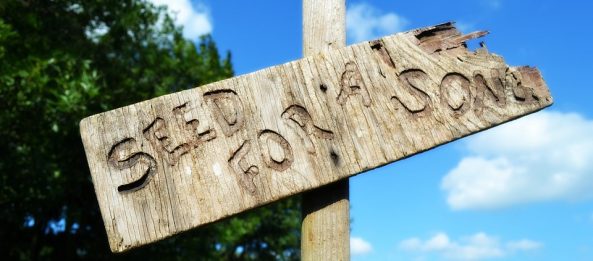
Covid Economics
The grave situation we find ourselves in with regards to the coronavirus could actually also be an opportunity for positive change in a couple of ways. Here, I would like to address the first of these. It is quite obvious that the current, long-prevailing, market-based, economy-driven form of supply is not going to be able to meet the needs of the majority of people. We cannot continue to base the distribution of goods and services on the monetary wealth of those concerned. There will be very few winners and millions of losers.
An awful lot of people are going to lose their jobs. The first to be hit will be the hospitality and tourism industries, but this is a house of cards and each industry depends on supplying the needs of another. The money is going to continue the trend of recent years and move towards the bank accounts of a smaller and smaller group of people. But it doesn’t have to be this way.
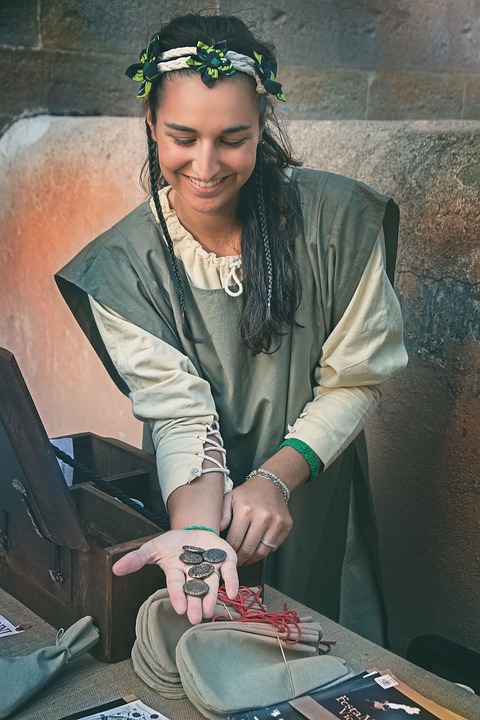 What people have started to forget is that money is only useful if it’s used to buy things, whether goods or services – it’s not meant to be an end in itself, a goal to chase after, a way of keeping score, so that some people have so much that it would take them several lifetimes to spend. It’s not an entity, like a person or an animal – it doesn’t “need to be free.” It doesn’t actually exist in that sense. It’s a social construct.
What people have started to forget is that money is only useful if it’s used to buy things, whether goods or services – it’s not meant to be an end in itself, a goal to chase after, a way of keeping score, so that some people have so much that it would take them several lifetimes to spend. It’s not an entity, like a person or an animal – it doesn’t “need to be free.” It doesn’t actually exist in that sense. It’s a social construct.
How about if we start thinking about what we actually need, rather than how much money we need to buy it? If the global financial markets and stock exchanges crash, does that mean there are any less actual tangible resources in the world? We still have the same amount of land, food, houses, people, technology and expertise as we had the day before. So, what do we need?
At the very basic level we need food, shelter and healthcare. At the next level we have the things that bring living to life, such as education, entertainment, and communication. Then there is transport and travel. Finally, there are technologies to support all these things.
Is there any reason why all these things should be entirely dependent on a free-market economy? Starting from the expertise level, there are many, many examples of people who share this without payment. People teaching/tutoring/coaching in subjects they are experts in, whether within their own circle of friends and family, or within the wider community through charities such as adult literacy. People writing software that was shared for free (the early days of the internet were heavily dominated by this kind of people, as opposed to the advertising model that prevails now). People devoting their spare time to uploading books to Project Gutenberg, so that copyright-free works can be available free of charge world-wide. Entertainment is an obvious one: there are very few people who get into acting, music, writing fiction, etc, in order to get rich. The same can be said for the majority of people in the healthcare, education and other caring professions. Scientists are not in it for the money. Food: community gardens growing crops together, people volunteering their time in foodbanks and soup kitchens. Shelter: housing co-ops who build homes together in much the same way as communities such as the Amish have always done.
Money was supposed to be a tool, a medium of exchange, something to work in our service. Instead, we have ended up serving it. It is a game with an ever-decreasing amount of billionaire winners, and an ever-increasing number of destitute losers. It doesn’t make any sense. A situation like the current pandemic gives us a unique opportunity to re-evaluate and change this. Forget about accumulating wealth. Let money be our servant rather than the other way around.. Let’s use it for sharing resources. Let’s use it to build community. Let’s use it to make sure that everyone’s basic needs are met as an absolute minimum, and then let’s look at what else each of us can give – to each other.
Mary Tynan

Chronic Illness Warriors Can Show the Way in the Days of Covid 19
When we first heard the tales of people in China being in quarantine for two weeks – and going stir crazy after a couple of days – many pwME (people with Myalgic Encephalomyelitis) were saying (to each other) – “Two weeks is too difficult? They should try x number of years.” A considerable amount of us are mainly housebound or even bedbound, and those of us who live alone effectively spend much of our lives in quarantine.
I have had ME for many years. I’ve always lived alone, but since 2015 I have been living in a house in a rural area. This means there is nowhere for me to go without a car journey (I live six miles from the nearest bus stop), so I don’t get to go very many places. As I receive few visitors, I spend most of my life on my own. There are a lot of us in a similar position, and we have had to develop multiple strategies to cope with the isolation. As a result of this, I believe we have a mental “head start” on the rest of the population in the matter of social distancing.
Whilst it would be nice to think that others will have a better understanding of our situations after this – with less of the “I wish I could spend the day in bed,” “It must be nice to be able to watch Netflix all day,” “I’d love to have the house to myself” type of comments, that’s not what this article is about. Rather, it’s that we have developed coping skills over the years that make us experts in this matter, and we are in a position to advise those to whom this is new and a shock.
Let’s start with social media. To those who argue against it by saying that it cuts down on genuine face-to-face interaction, you have to understand that it can also have the exact opposite effect for those who don’t have the same opportunities as the majority. I sometimes think it would be very difficult to live without Facebook. It keeps me connected to my real-life friends that I rarely, if ever, get to see, but it has also given me a whole new group of friends, many of them connected with my illness. There are numerous supportive chronic illness groups on there, and as some of them are international, you may often find someone to talk to whatever time of the day or night it is where you are. I have made one friend through Facebook with whom I spend literally hours every week talking on Messenger. Other people have similar experiences with Twitter. And then there are places such as The Mighty – massive online communities, ready and waiting to encourage and share experiences with each other.
But it’s not just other ill people. You can join groups with people who share similar interests, whether that be reading, politics, film, or whatever. You can keep up to date with people in your previous profession. You can feel as if you’re not really isolated, as all those people are within reach of your phone, tablet or laptop.
And then there are the non-social ways of keeping yourself occupied and interested. There’s far more than just Netflix and reading! I’ve done many online courses with sites such as FutureLearn, in subjects as diverse as German, creative writing and archaeology. Specialist language sites such as Duolingo can be quite addictive. Not to mention the whole online gaming community.
Got something to say? Start a blog, or write for a site such as Medium or the Huffington Post. Declutter your house, one drawer at a time. Get into cooking. Learn a musical instrument or practice one you already know. Knit. Crochet. Paint. The possibilities are endless. And if you need encouragement or don’t know how to start, just ask one of us chronic illness warriors. We’ll be glad to share our expertise with you!
Mary Tynan
Picture by Bruno Cervera from Unsplash.
Living Life with a Low-Capacity Battery
The other day, I was struggling, as many of us with chronic illness do, to explain myself to a friend. As usual, I had to give up. I can’t explain to her why it’s not perfectly easy for me to drive in and out of my nearest city (an hour’s drive each way, a quarter of which is on narrow, twisty rural roads) several times – or even once – a week. I’ve tried using the spoon theory, which makes a lot of sense to me, but I don’t seem to be so good at explaining it to others, and people often don’t want to or have the time to follow links and read articles that you send them.
I don’t claim to have invented the battery analogy – I’ve seen it many times before, particularly in connection with Myalgic Encephalomyelitis, the neurological disease I suffer from. But today, possibly because I just recently got a new laptop, with a much longer-lasting battery than its predecessor, I suddenly felt like I could use it to make a good explanation of what it’s like to have ME and other chronic illnesses – something that I and others could show to our friends and family members to help them understand.
Imagine two laptops, or smartphones, or tablets. Both have a battery. Each battery can only recharge once in a 24 period. One has a charge that lasts for 20 hours, the other 5 hours. This is a pwME (person with ME) versus a healthy person.
But it gets more complicated than that. There’s something called boom and bust. Imagine a pwME wants to go away for a weekend and be out of bed for 14 hours a day for three days – I’m planning to do this myself in a couple of weeks. (I will be attending a conference: having breakfast in the hotel with friends; going to talks during the day; and having dinner together in the evening.) But that means you need to find 27 extra energy hours somewhere.
Maybe you can use some of those backup battery packs? Maybe you can get 5 hours out of each of them. So, 6 of them should be more than enough, with a few extra hours for emergencies. But they all need to be recharged overnight (19 hours) also.
AND YOU ONLY HAVE ONE CHARGER!!!
So, in order to add those 27 extra hours to your weekend, you are going to have to spend 19 x 6 (114) extra hours in bed. This will obviously have to come out of the five hours a day when you are currently not resting. You do the maths! (I was being rhetorical there, I am actually going to do the maths. 🙂)
114 divided by 5 is almost 23. That’s how many days, at minimum, you will have to be bed bound to recover from your three days of activity. More than 3 weeks. And I am actually being very conservative with the figures here. You could easily add another week to that. And some activities will use up the batteries faster than others, making your energy debt even greater.
That’s how it works. And, although I am writing from my own experience as a pwME, it works the same way for many other chronic illnesses.
So next time you see a chronically ill person attending a party, going out for a day, or even having a weekend away, don’t think to yourself “She must be getting better/he can’t be that bad really/how come they can find the energy to do the things they really want to do?”
Instead, do the maths. Your chronically ill friend will still be paying the price days, weeks, or months afterwards – long after the party, event, or holiday has faded from your memory.
Mary Tynan
Previously published in The Mighty and Yahoo Lifestyle (as Teresa Ledwith) under the title The Best Analogy to Explain ‘Energy Debt’ With Chronic Illness.

Red Hood
(Violence and adult themes)
Seena could hear the foxes howling in the back garden. She had put out a few scraps for them earlier. She looked out the window and saw two of them enjoying their meal. Her grandmother always told her she shouldn’t encourage them, but she felt sorry for the skinny little canines. She had always been fascinated by foxes, going back to early childhood. Of course, in those days the animals were not so plentiful in cities, and sightings were rare treats. Now, however, the animals were everywhere. Many people found them a nuisance, but Seena often felt comforted by the thought of foxes in her garden. In her mind they kept her safe.
Thinking of her grandmother reminded Seena that she had promised to bring her round some dinner tonight. What to cook? She decided on a new recipe she had got recently for chickpea curry with brown rice.
While the meal was cooking, Seena watched the foxes. They had finished eating now and were sitting on the grass looking towards the house. As she gazed out the window at them, it felt like a communion between woman and beast. Shortly, however, the animals got up and left, and Seena returned her attention to the dinner.
When she was finished cooking, Seena filled some Tupperware with curry and rice for Granny. She donned her favourite bright red coat, and, as it was a cold evening, she put the hood up.
It was about a 20 minute walk to Granny’s house, and Seena travelled briskly to avoid the chill. It was a relief to walk into the welcoming warmth of her grandmother’s house and receive her cheery greeting.
‘You’re so good to an old woman, Seena, coming out on a cold night like this.’
‘It’s nothing, Nani. Besides, I want to know what you think of my new recipe,” Seena said as she plated up the chickpea curry.
‘I’m sure it will be delicious, love,’ her grandmother replied.
As the old woman ate, they talked about the family, Nani recently having had a visit from her Grandson and his new wife. Inevitably, this lead to talk of Seena’s situation – Why didn’t she find a nice boy for herself and settle down like her brother? Seena, as usual made light of Nani’s questions and deflected the conversation back onto her brother. While her parents were perfectly aware of her preference for her own gender, it had been agreed within the family that what Nani didn’t know couldn’t hurt her, and Seena was happy with that.
Finally, it was time to head out into the cold again. Her grandmother asked her to stay the night, but Seena had some work she wanted to finish at home, so she donned her red coat once again and stepped out briskly. Looking at her watch, Seena was surprised at how late it was. She really wanted to get home as soon as possible Should she take the shortcut? She didn’t usually do so at night, but this was a safe area and she felt such a strong yearning to be home quickly.
The shortcut was a pathway at the side of a meadow, with a high wall on the other side. It was often busy during the day, but at this time of night it was deserted. Seena pulled up her hood and followed the pavement at a steady pace. She was about halfway down when she felt a callused hand grab her arm. Next thing she knew she was slammed against the block wall and a rough-looking man was in front of her. He pulled down her hood and ripped it from her coat.
She started to scream but he grabbed her by the throat. Holding her still with his right hand, he used his left to open her coat and tug at her jeans and underwear. His face was now looming and she could see his bald head with a union jack tattooed on it and a vein pulsating in the forehead. She could smell his fetid breath The fear was a stabbing knife in her stomach..
“Please,” she whispered. He started to undo his own trousers.
Suddenly, something leapt out of the darkness straight onto the man’s left arm. It was a fox! As the attacker turned to see what was there, his grip on Seena’s neck loosened. There was a growl, and another fox was on his right leg. Meanwhile a third canine nuzzled at Seena’s hand. She pulled her clothes back into order and raced desperately for home.
It was several hours later. The police had been round to see her and Seena had told them everything. They promised to call if there was any progress. Seena had gone straight into the shower when they left, scrubbing herself as if she could never be clean again. Now she was coming downstairs in her dressing gown when the phone rang. It was the policeman who had visited her earlier. They had found her attacker.
‘He was easy to identify, ma’am, he had been terribly mauled by the foxes. He confessed to everything. He’ll be in hospital for a while, though, before he’s well enough to stand trial.’
‘Thank you Officer.’ Seena put down the phone. Something made her turn towards the window. Hearing a faint mewling sound, she opened the curtains.
Six foxes were sitting in a semi-circle on the grass facing her. In the centre was her red hood.
Thank you,’ Seena whispered.
Nothing happened for a moment, and then, one by one, the foxes seemed to nod to her before walking slowly from the garden.
Mary Tynan

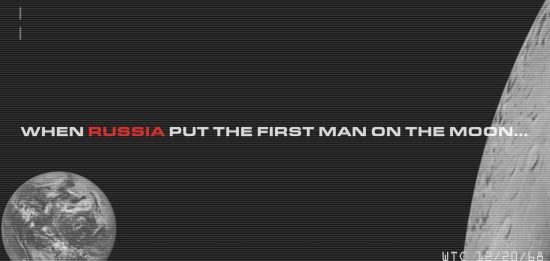
Red Moon – Moonrise
Those of you who have read my reviews of The Springheel Saga (Series I and II) will be familiar with the name Wireless Theatre. The company produce high quality radio drama, which is made available via download from their website. If you enjoyed Springheel Jack, or if you are a fan of alternate history tales, then you probably won’t want to miss this new mystery series.
It Monday, 3 December 1979, and Eddie Sloper is getting ready to go to work. However it is not a 1979 any of us remember. The split that created this timeline happened in 1968, when Yuri Gagarin became the first man on the moon. With lunar bases and the moon being weaponised with nuclear warheads, the arms race between the US and the Soviets has expanded off-planet, with the result that the doomsday clock is now very close to midnight.
Eddie works for the British Space Liaison Department and much of the action in the first episode takes place there with very convincing performances from Philip Bulcock (Eddie) and Stephen Critchlow (as Eddie’s boss, Wilkins). However, a lot of the soundscape of the piece is in the form of news reports which fill us in on both the background history and the continuing arms crisis. I love the little details that has been added as well, such as Sid Vicious being on trial for murder (when in our timeline he had been dead for months), and the ad for “Space Snacks,” which sound like something I once purchased in the Cape Canaveral gift shop (pizza and ice cream were the two I bought).
As usual, this is a slick production, with excellent work from everyone on the team. In particular the music, by Francesco Quadraruopolo, and the overall sound design, by Jim Sigee, contribute greatly to the atmosphere of the piece. Furthermore, there is a very good balance between events on the world stage and Eddie’s story, whilst his voiceover helps to bring everything together.
Episode 1 ends on a cliffhanger, with a murder which will no doubt drive a lot of the action in further parts of the series, but don’t worry, because Episode 2 is available already, so you won’t have to wait to see what happens next!
Episode 1 of Red Moon is free to stream on Wireless Theatre’s audioBoom channel: https://audioboom.com/posts/6549173-red-moon-episode-one-moonrise-audio-drama.
Episode 2 and all further episodes are exclusive to the Wireless Theatre website: https://www.wirelesstheatrecompany.co.uk/product/red-moon-phase-ii-umbra/, with Episode 3 being released in March. The story was conceived by Jack Bowman and Robert Valentine, with the latter also writing, directing and producing.
Mary Tynan
Cover art by @arbernaut

New Century – New Aliens
Watching E4’s new 6-part drama The Aliens, I was strongly reminded of the 1989 American TV series Alien Nation, based on the 1988 film of the same name. Initially, I was struck by the similarities between the two programmes: in each an alien ship crash lands on earth, spilling it’s refugees, who then commence a new life on our planet. But, if art imitates life, then the differences between the two shows may be a mirror of how society’s views and attitudes have altered in two plus decades.
Aliens in SF are often used to represent the other: the foreigner, the outsider, the ‘not one of us.’ In both The Aliens and Alien Nation, the offworlders are literally refugees and immigrants so the metaphor is clearly drawn. So how do the respective shows reflect the social attitudes of their time and place of creation?
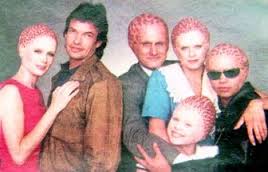 In 1989, the US was still seen as the land of opportunity – “Give me your tired, your poor, your huddled masses yearning to breathe free,” as the 19th Century poet Emma Lazarus famously said. In Alien Nation, the Tenctonese, or “newcomers” as they were called, were being gradually integrated into human society, although not without being on the receiving end of a fair amount of racism – they are referred to as ‘slags;’ given silly human names such as Albert Einstein; and often have the most menial of jobs. However, they live in human neighbourhoods; mix in human society; and work their way up the employment ladder – both the film and TV series feature a human/alien police partnership, for instance. The aliens are portrayed as victims rather than threats: tellingly, the ship that crashed was a slaver.
In 1989, the US was still seen as the land of opportunity – “Give me your tired, your poor, your huddled masses yearning to breathe free,” as the 19th Century poet Emma Lazarus famously said. In Alien Nation, the Tenctonese, or “newcomers” as they were called, were being gradually integrated into human society, although not without being on the receiving end of a fair amount of racism – they are referred to as ‘slags;’ given silly human names such as Albert Einstein; and often have the most menial of jobs. However, they live in human neighbourhoods; mix in human society; and work their way up the employment ladder – both the film and TV series feature a human/alien police partnership, for instance. The aliens are portrayed as victims rather than threats: tellingly, the ship that crashed was a slaver.
In contrast, E4’s spaceship was said to be a prison ship (according to the humans – the aliens have lost their memory of life before Earth) and the refugees are confined behind a wall, only allowed into the human side to work for a limited period each day, returning to Troy (their place of abode) before their curfew at 7pm each evening. They are portrayed as an evil influence, due to the fact that their hair, when smoked, has a narcotic effect on humans, and they take advantage of this by working as drug dealers and organising into criminal gangs.
Bearing in mind the media hysteria over immigration in Britain in the run up to the 2015 general election, with politicians of every stripe threatening to clamp down on it, it is obvious that The Aliens plays right into these fears and controversies. Although it suggests towards the end of the series that keeping them behind the wall is not a good idea, there is no indication that anything is going to change. Almost all of the alien characters are shown to be violent, no matter what side they are on.
Interestingly, in terms of actually living there, present day Britain is probably a better place for ethnic minorities than late eighties/early nineties LA, as evidenced, for instance, by the police beating of Rodney King and the subsequent riots; but in terms of official, media and public attitudes to immigration matters have certainly deteriorated badly in the past 25 years and The Aliens accurately reflects this zeitgeist.
Although both series concern refugees, Alien Nation overall seems to be more about racism in general, whereas The Aliens appears to relate more to immigration (the aliens don’t actually look any different than humans, for example). However, the biggest difference, to my mind, is that of perspective: Alien Nation was optimistic and full of millennial hope that problems may be overcome; The Aliens offers nothing but despair for the future, which sadly reflects the feelings of many in Britain today at the dawning of the new century.

Edinburgh Preview – Much Further Out Than You Thought
Much Further Out Than You Thought is a one-man show which tells the story of Lance Corporal James Randall, who finished his tours of duty in Helmand six years ago. It is Remembrance Sunday, and he is in his living room in south London recording a birthday message for his young son, surrounded by childhood toys and memorabilia. As the narrative progresses, it becomes clear that James is suffering from PTSD, and the audience learns how the collision of civilian Britain and front-line Afghanistan can lead to catastrophe.
I met with writer and actor Giles Roberts after the play’s preview at the Old Red Lion in Islington. A charming and interesting man, he is as sympathetic and likeable as the character he portrays with such expertise. Giles was quick to point out that Much Further Out Than You Thought is not intended to be anti-war propaganda – it is the individual story of a single soldier. He does, however, object to the glamorisation of the army which appears to be taking place recently.
Although James Randall is fictional, Giles did have the help of two soldiers as consultants when he was writing the play. He got the idea after watching a 1980s documentary called Four Hours in My Lai, about a massacre by US troops in Vietnam. The personal testimonies of the soldiers particularly resonated with him, and he began to try to empathise with how an act of killing must irreparably alter a person, and how it influences them in the future.
We talked about the timelessness of the situation: young men are trained to kill, but what happens to that training when they come back home? There has been a lot of talk about World War I in the last couple of years, and shell-shock cases have parallels with current incidences of PTSD. But Giles emphasised that warfare is more asymmetrical now: there are no longer two rows of trenches and the enemy can be anyone and anywhere. This causes the combatants to develop a sense of hyper-awareness, which, unfortunately cannot be easily turned off when they return to civilian life.
Despite having several writing credits for spoken word, Much Further Out Than You Thought is Giles’ first play. As an actor, trained at the Oxford School of Drama, he has many credits to his name. The play is directed by Bethany Pitts, and Giles spoke of the short rehearsal period with a director he already knew very well, and how interesting it was to come at the material from two different angles. Much Further Out Than You Thought is the winner of a 2015 IdeasTap Underbelly Award. With IdeasTap sadly having to close, Giles and Bethany will be among the last people to benefit from their invaluable help.
Much Further Out Than You Thought is at the Underbelly Cowgate (Big Belly), 56 Cowgate, Edinburgh, EH1 1EG, from Thursday 6th – Sunday 30th August 2015 (not 17th), at 3.20pm. It is produced by the Molino Group. For more information visit The Molino Group.













